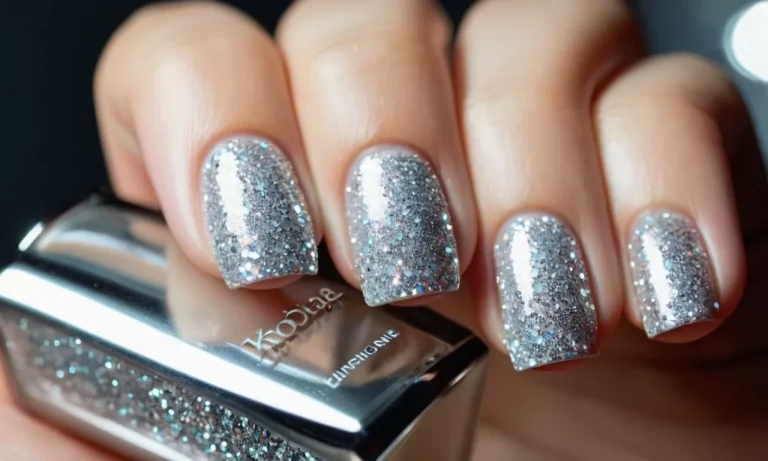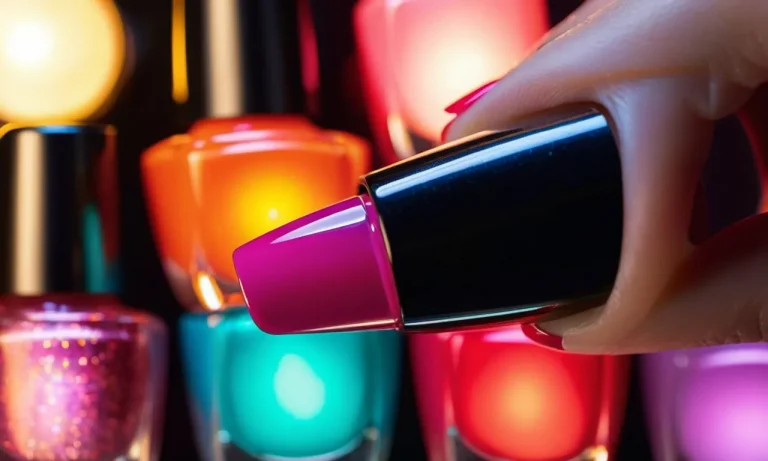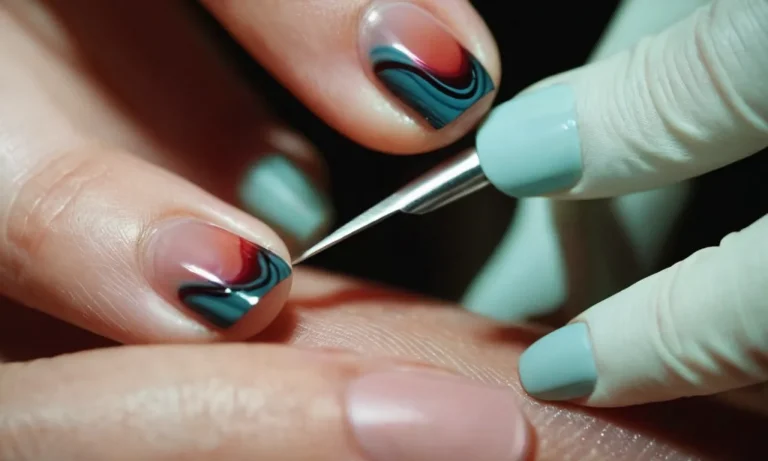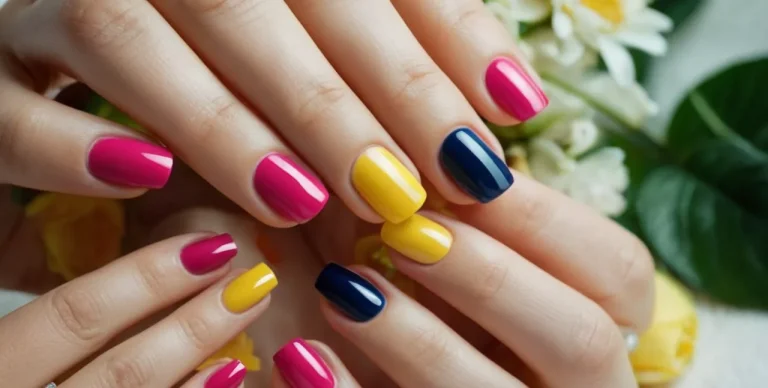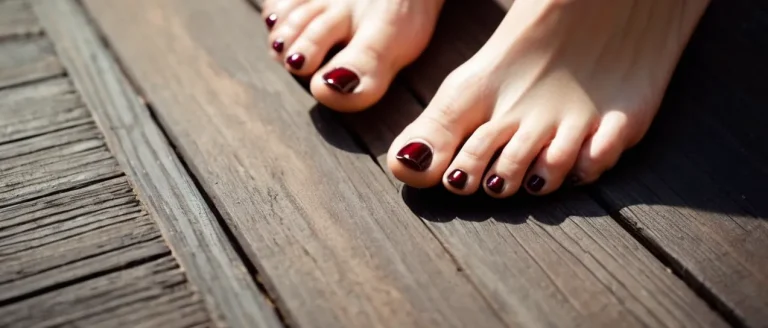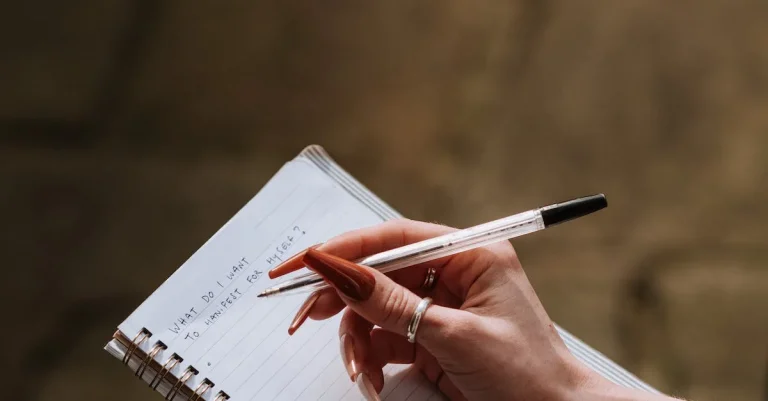Can You Glue A Gel Nail Back On?
Have you ever had the misfortune of popping off one of your beautiful gel nails? The sight of that bare nail surrounded by perfectly glamorous companions is enough to ruin any gal’s day. But before you run off to the salon to get that nail replaced, you might be wondering if you can simply glue your gel nail back on rather than redoing your whole manicure.
If you have the time, patience, and steady hand, you may be able to successfully glue a popped off gel nail back on your finger. But it does require properly cleaning, filing, and using nail glue as well as taking special care not to damage your natural nail underneath.
Keep reading for a full step-by-step guide to reapplying a gel nail that has popped off. And if you’re short on time or worried about damaging your nail, you’re always better off seeing your nail tech to have it professionally repaired.
What Causes Gel Nails to Pop Off?
Gel nails can unexpectedly pop off for a variety of reasons. Here are some of the most common causes:
Improper Application
If gel polish is not applied properly, it can lead to lifting and popping off. Some key mistakes include:
- Not properly prepping the natural nail – The natural nail plate needs to be freshly filed and dehydrated so the gel can adhere properly.
- Applying too thin of layers – At least 2-3 coats are needed for a strong bond.
- Curing for too short – Each layer needs to be cured under the LED or UV light for the full recommended time.
Nail Damage
Damaging the gel nails can cause the bond to break:
- Peeling or picking at the gel – This fractures the seal causing lifting.
- Hard impacts that crack the gel – Dropping heavy objects on the nails can cause them to pop off.
- Soaking off incorrectly – Using metal tools or picking can damage the nail plate.
Oil Exposure
Oil residue left on the nail plate will prevent proper bonding. Oils can come from:
- Nail preparation – Lotions and moisturizers.
- Cooking and cleaning – Grease and chemicals.
- Nail products – Oily nail treatments.
Rebalance Issues
As the natural nail grows out, the gel can start to separate:
- Growth from the cuticle – The gel isn’t anchored as tightly at the new growth area.
- Longer free edge – Gravity causes bending leading to cracking.
Getting regular infills every 2-3 weeks can help prevent lifting from nail growth.
While gel nails randomly popping off can be annoying, paying attention to proper application technique and nail care between appointments can reduce the chances. But an occasional lost nail isn’t the end of the world. 😉 It happens to the best of us!
Supplies for Reapplying a Gel Nail
Nail glue
When reapplying a popped off gel nail, using the right nail glue is crucial for getting a strong bond and long-lasting manicure. The best glues for gel nails are ethyl cyanoacrylate adhesives. These fast-drying glues formulated specifically for nails provide a durable bond between the natural nail and enhance gel nail.
Top choices include CND Stickey Resin Gel Glue, Gelish pH Bonder, and Young Nails Protein Bond. These reliable glues work well with gel polishes and extensions. Avoid super glues which can damage the natural nail.
Nail glue for gels costs between $6-$15 and one bottle can last through numerous applications.
Nail file
Filing the surface of the natural nail is an essential step before re-gluing a gel extension. This removes any leftover gel residue and roughens the nail plate for optimal glue adhesion. Use a 100/180 grit file to gently buff away the shine for the glue to bind properly.
Be careful not to over-file as this can thin out the nails. Lightly file the inside of the gel tip too. Proper filing takes 1-2 minutes per nail. Having a quality metal file on hand is important for gel nail care. Some top-rated brands are Diamond Nail File, Mont Bleu, and McCart.
They range from $5-$15 and last for many manicures.
Cuticle pusher
Pushing back and cleaning up the cuticle area allows the newly applied gel nail to sit flush against the nail bed. Cuticles also need to be cleared so they don’t interfere with the curing process under the LED or UV nail lamp.
Well-groomed cuticles help maximize contact between the natural nail and gel extension. Investing in a good cuticle pusher tool like the Sally Hansen Cuticle Pusher + Nail Cleaner for around $5 can make a difference. Carefully push back cuticles after softening them in warm water.
Never cut cuticles as this can lead to infection.
Having these three essential supplies on hand will help reapply popped off gel nails quickly at home. With the right tools and technique, you can get the gel back on securely. Be sure to lightly buff and clean the natural nail first.
Apply a thin layer of nail glue to both surfaces and hold for 30 seconds or until fully bonded. Be patient while the glue sets. Then seal the gel extension edge with gel base coat. The gel nail should now stay on for many more weeks of perfect polish wear!
How to Glue a Gel Nail Back On
Step 1: Remove shiny residue
If your gel nail pops off, the first step is to remove any sticky residue left on your natural nail. Gently buff away the shine with a nail file or buffer. You want the natural nail surface to be completely clean and matte, with a slightly rough texture, so the glue can adhere properly.
Step 2: Roughen nail surface
After removing the residue, use a coarse nail file or buffer to lightly rough up the surface of your natural nail. This helps the glue grip better. Be careful not to over-file, as you don’t want to thin out or damage the nail bed.
Step 3: Prep natural nail
Clean your natural nail thoroughly with nail polish remover or alcohol to remove any oil or debris. Push back and trim any cuticles. Apply a nail dehydrator or primer to further prep the nail and help the glue bond. Let your nail dry completely before moving to the next step.
Step 4: Apply glue
Apply a thin layer of nail glue (cyanoacrylate adhesive) across the entire nail surface. Try not to get glue on your skin. Let the glue become tacky and sticky before adhering the gel nail tip, usually about 10-30 seconds. This helps it stick better.
Step 5: Press on gel nail
Gently press the gel nail tip onto your natural nail so it is centered and straight. Hold firmly for about 30 seconds. Make sure you don’t get any glue on the underside gel part. Once secured, you can file the edges to blend seamlessly. The glued gel nail should stay on for 1-2 weeks typically.
Avoid water exposure for 24 hours while the bond fully sets.
With some careful prep and the right glue, you can easily re-adhere a popped off gel manicure at home. Just be patient during the process and avoid getting glue on your skin or nail cuticles. Your DIY gel nail repair should look amazing!
Aftercare Tips for Reapplied Gel Nails
Protect from impacts
Gel nails that have been reapplied can take up to 24 hours to fully cure and harden. During this time, it’s important to avoid activities that could cause impacts or pressure on the nails as they will be more vulnerable to chipping, cracking or peeling off.
Try to use your hands gently and refrain from tasks involving gripping, squeezing or pressing hard objects until the gel has fully set.
You should also wear gloves when doing household chores like washing dishes, gardening or cleaning to protect the gel application. The gloves form a protective barrier that shields the nails from bumps or scrapes from rough surfaces.
Wearing gloves for a day while the gel nails cure will help keep them intact.
Watch for lifting
In the first few days after getting gel nails reapplied, carefully check for any signs of lifting near the cuticles or sides of the nails. Lifting indicates areas where the bond between the natural nail and gel enhancement has weakened or separated slightly.
If you notice small lifted areas, stop the progression by gently pressing the gel back down and holding for 30 seconds. Use nail glue sparingly to re-adhere larger areas of lifted gel. Watch closely over the next few days to ensure no more lifting occurs before the nail can fully attach during curing.
Getting ahead of any lifting right away reduces the chance of injury or removal of the gel application.
See a nail tech for a full repair
While you can temporarily re-adhere loose gel at home, nail technicians have specialized tools, lighting and training to properly assess and repair problem areas for the best long-term results. If lifting worsens or gels start popping off entirely within a few days of application, make an appointment with your nail salon.
The nail tech can remove any failing gel and prep and re-apply new gel enhancements from scratch for maximum durability. Damaged or weakened natural nails may also need protein treatments or specialized care before regluing gel overlays to prevent future lifting issues.
Other Options for Repairing a Broken Nail
If gluing a broken gel nail back on does not work or is not an option, there are some other effective methods for repairing nail damage. While a broken natural nail can typically grow back on its own in 4-6 months, a gel manicure can complicate the healing process.
Using alternatives to glue allows the nail bed to heal properly.
Removing the Gel Polish
Before trying to repair a cracked or broken nail, it’s important to remove any gel polish that is still attached. Gel polish is difficult to remove completely without damaging the natural nail underneath. Visiting a salon to have the gel polish professionally removed is the safest approach.
At-home gel polish removal kits are available, but they carry a higher risk of worsening the break. Chemical removers like pure acetone can dry out nails. Gentler foil and wrap removal methods take patience. Rushing the process can lead to pulling off layers of the natural nail.
Trimming and Filing
Once the gel polish is removed, trim down the broken part of the nail so it is smooth. Use a nail file to shape the edges. Rounding the corners prevents snagging and further cracks (1). This also helps the nail structurally as it regrows.
Resist the urge to rip off any lifted or hanging gel polish. Trimming and filing eliminates loose bits cleanly. Pushing back and securing cuticles is also beneficial to encourage new nail growth.
Protecting With Nail Glue
Brush-on nail glues and hardening agents create a protective layer on natural nails. This seals the nail and prevents moisture loss and bacteria entering the nail bed. Using cuticle oil daily helps ensure the surrounding skin stays supple despite the glue.
The glued layer wears off with nail growth. Many people use these products to safely maintain nails through regrowth between salon appointments. As the nail grows out, the bonded tip can be trimmed and filed.
Nail Wraps and Repair Patches
Small adhesive patches and wraparound nail bandages provide another means to shield broken gel nails as they grow out. These repairs bond to the natural nail for stabilization (2). Wrap a patch over the cracked nail, or apply it only on top of the break.
Silk or fiberglass wraps can temporarily hold together a badly split nail. These treatments work best when applied immediately after damage occurs. Nail repair patches often last 1-2 weeks before replacement.
| Method | Pros | Cons |
|---|---|---|
| Gel Polish Removal | -Allows natural regrowth | -Can damage nail further if rushed |
| Filing/Trimming | -Smooths sharp edges | -Not a long-term fix alone |
| Nail Glue | -Protective barrier | -Repeated use can thin nails |
| Repair Patches/Wraps | -Bind split nails | -Temporary solution |
While broken nails are frustrating, taking the time to remove gel polish and allow proper healing helps the nails regenerate (3). Using protective measures in the interim safeguards the exposed nail bed until the natural nail can grow back healthy and strong again.
References:
(1) https://www.nailsmag.com/384380/broken-nails-what-you-need-to-know
(2) https://www.verywellhealth.com/broken-fingernail-repair-methods-1068875
(3) https://www.healthline.com/health/beauty-skin-care/how-to-make-nails-grow-faster#takeaway
Conclusion
While gluing a popped off gel nail back on is possible for the DIY beauty, it does come with risks like further damage or improper positioning of the nail. So take care if attempting it yourself, and know it’s always best to see your nail tech if there are any major issues with the application or the integrity of your natural nail.


